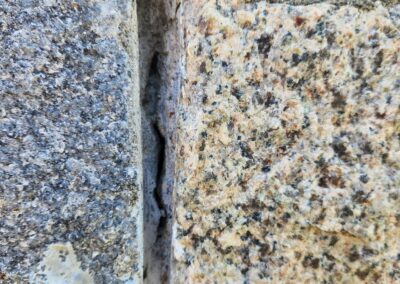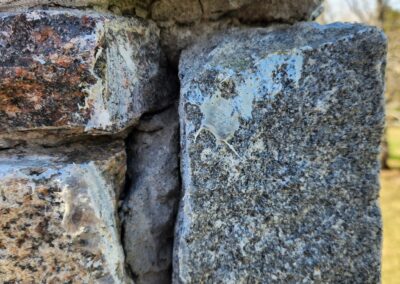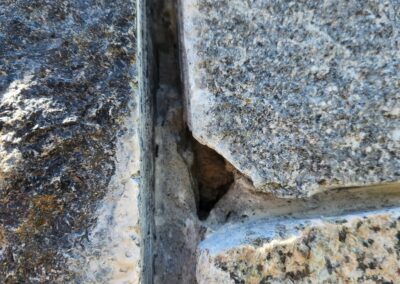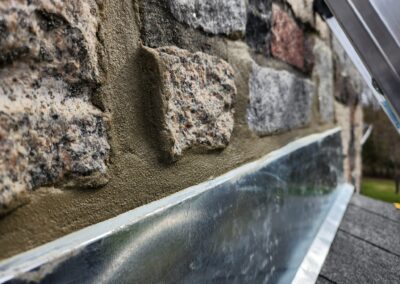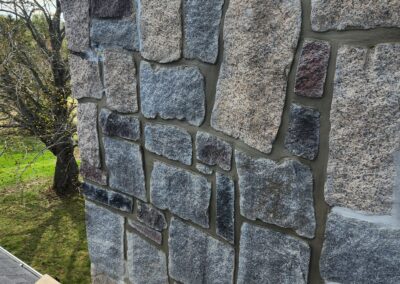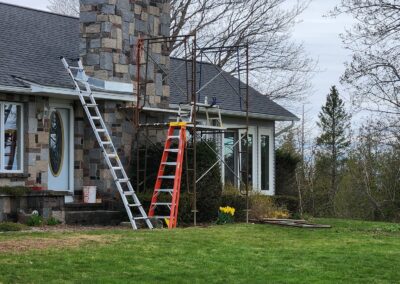The re-pointing begins…
According to the homeowners this chimney was built around 1973. Chimneys require re-pointing much like a roof requires new shingles every so often. Service life can vary depending on many factors, but typically mortar will last 20-30 years. The Provost’s chimney mortar was well beyond it’s service life.
Stage two consists of re-pointing each and every mortar joint on the chimney…and there’s a lot of them! In order to maintain the structural integrity of the chimney during this process, small sections were done and allowed to cure before the next section was started.
Working around the weather on a project like this can be a bit of a challenge. Masonry work requires dry conditions and this day wasn’t one of them. 45North took the opportunity to build some of the staging in order to access the north face of the chimney at a later date.
This photo shows the shear size of the chimney. For reference, the orange ladder is 8ft tall.
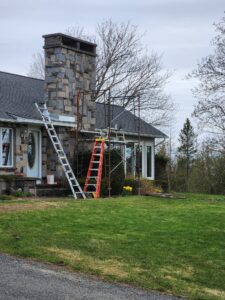
Time to start on the south side of the chimney, the goal was to work around the chimney standing at roof level and reach the highest comfortable height for grinding.
If you’re starting to see a pattern with the re-pointing it’s because there is one! This chimney is abnormally large, in fact, it’s like the house was built around it as a center piece.
The re-pointing takes it’s first turn…
As progress continues on re-pointing the chimney, the remainder of the south side and the west side were completed at the highest comfortable reach level from the roof deck.
The west side took a bit of a turn, when after grinding, the first stone detached from the chimney. This provided the opportunity to get a glimpse of the chimney’s construction method. The chimney is comprised of an internal structure that is wrapped in a granite veneer. The internal structure is a mixture of blocks, bricks and mortar that were used to fill the large internal void of the chimney.
The detached stone was reinstalled with new mortar, filling the void behind it as well. The rest of the joints received the same method of grinding in a dovetail shape and chipping any loose mortar free before filling with new structural mortar.
The purpose of this method is to lock the new mortar into the granite stones to prevent it from coming loose over time.



